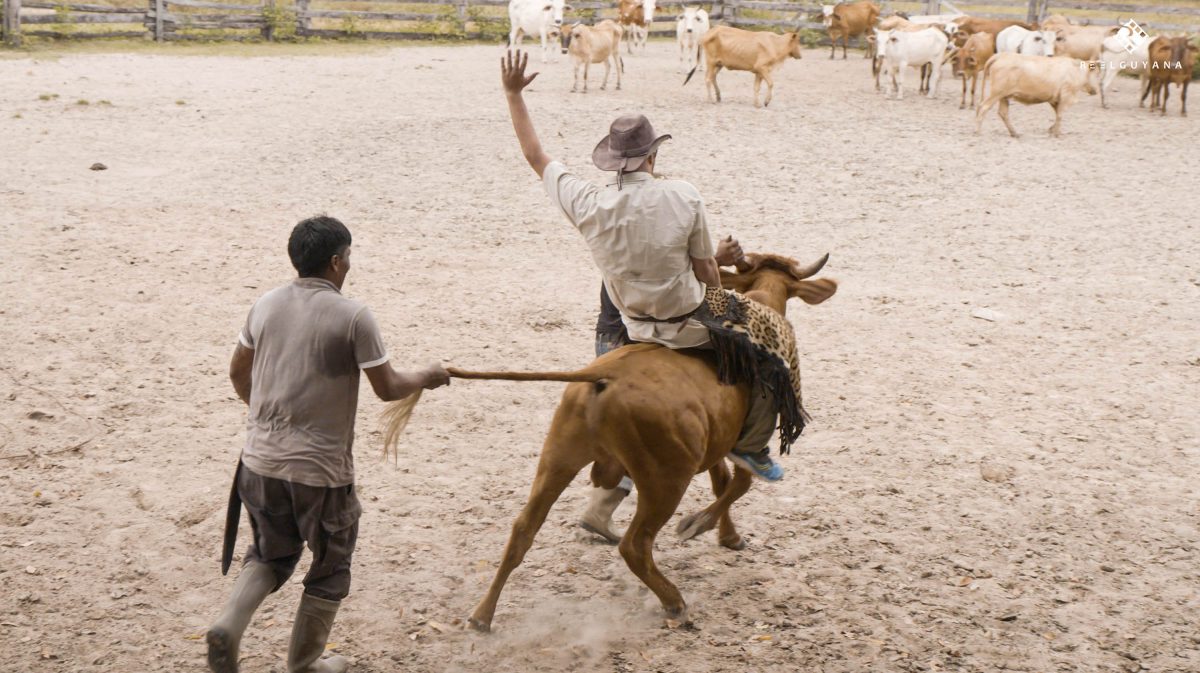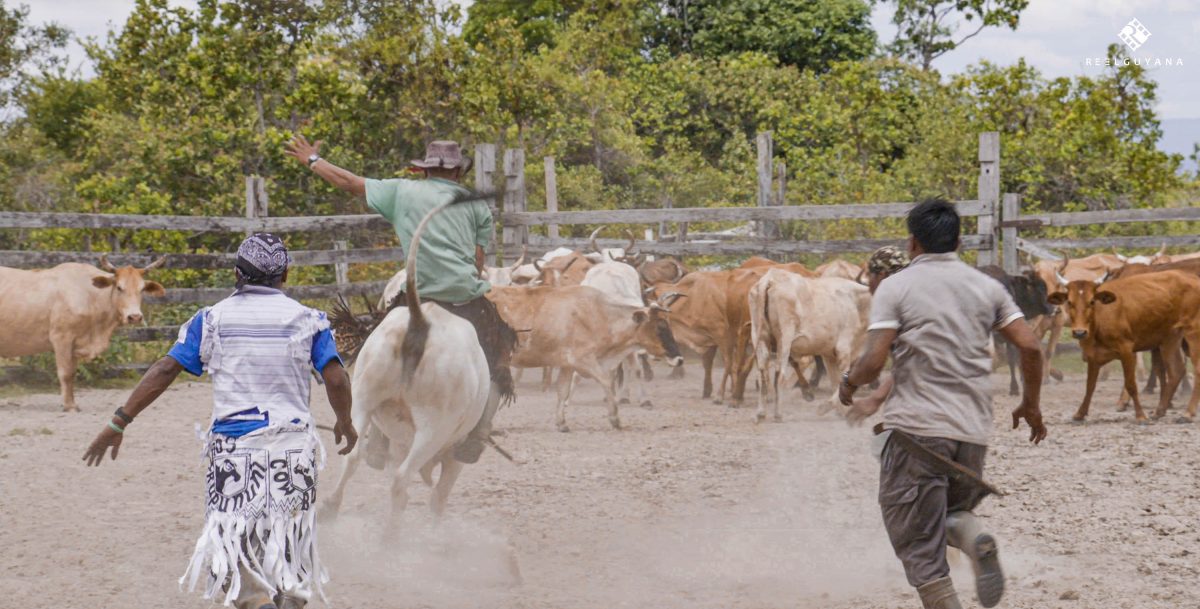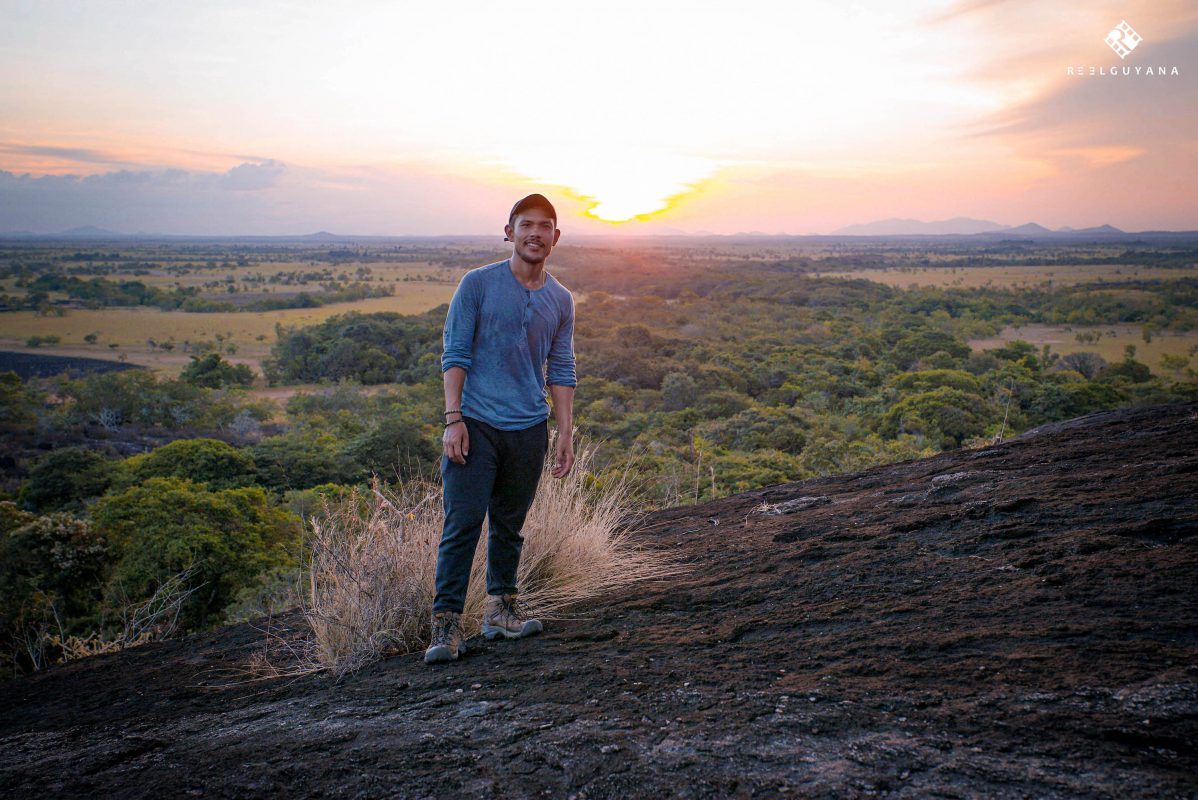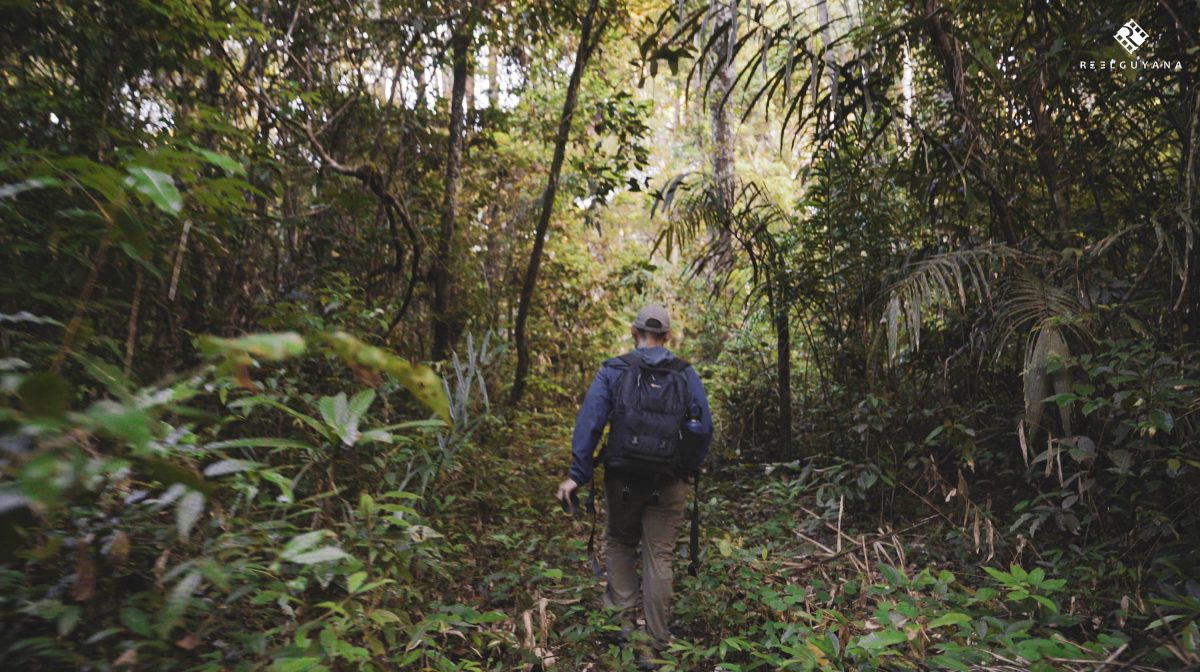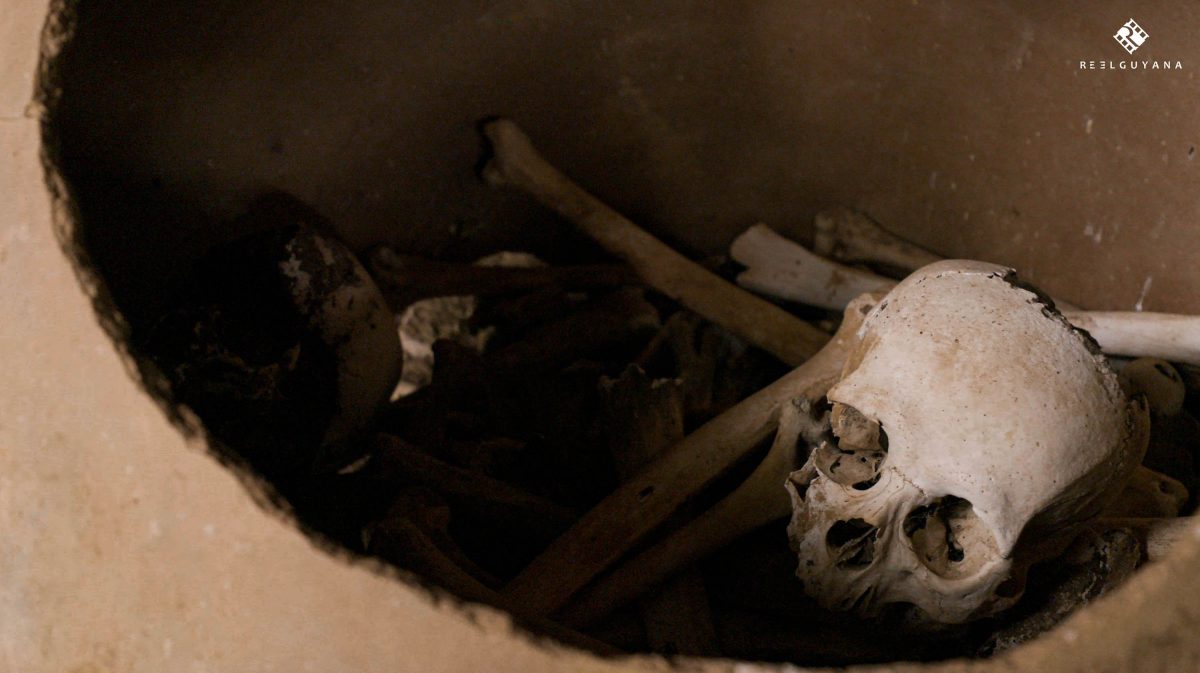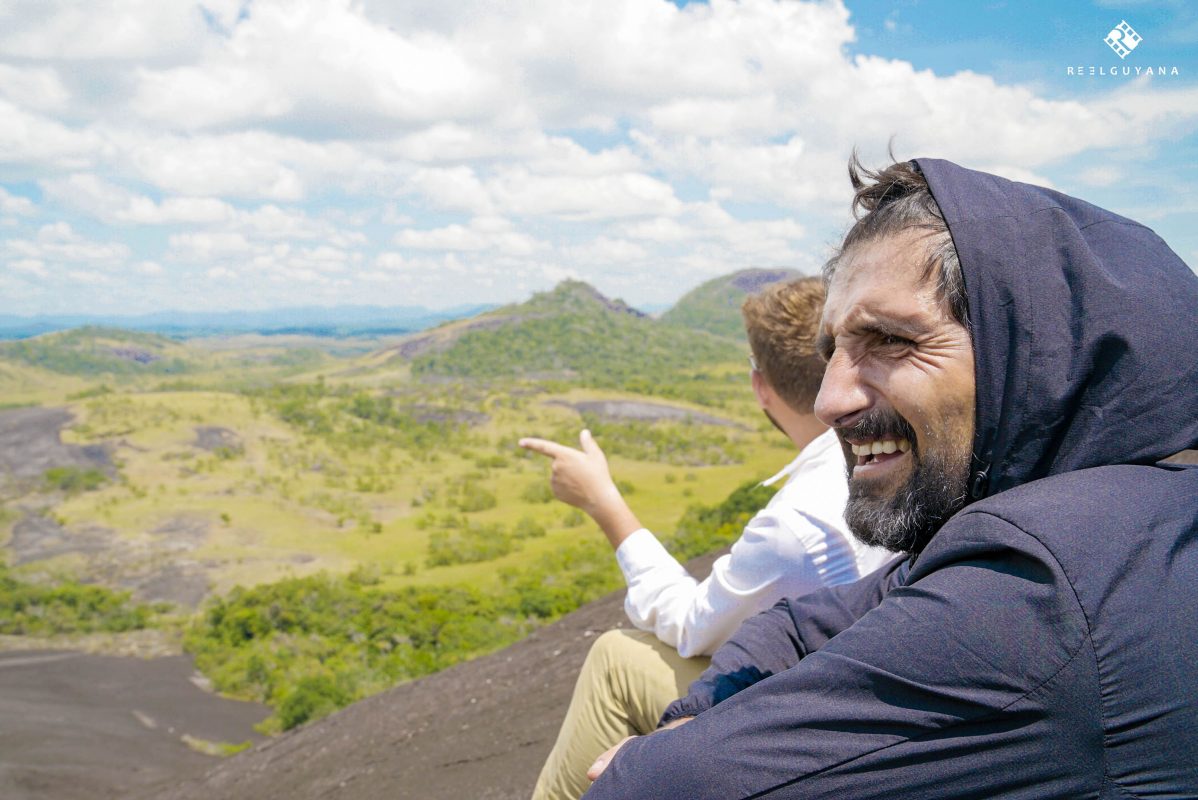Virtual adventures in the South Rupununi take centre stage in Inside REEL 2, which environmental filmmaker Alex Arjoon is releasing today.
The documentary series, filmed and produced by his production company, REEL Guyana, is set to premiere today at 8 pm on the Reel Guyana and Tourism Guyana Facebook pages, IGTV, and YouTube pages.
Drone footage captures breathtaking landscapes, made up of open sweeping savannahs and scattered mountains, which are great for hiking.
Arjoon, who narrates the series, shares his thrilling experiences of going horseback riding with vaqueros as they round up cattle, mountain climbing and visiting ancient indigenous burial sites at Skull Mountain.
He started the journey together with tour guide Justin DeFreitas, his sister, Victoria Arjoon, and his friends, Jonathan Antczak and Petar Veljacic.
The trip involved the team taking a boat from Yupukari Village in the northern Rupununi on the Rupununi River and making their way into the southern Rupununi, through the Kanuku Mountains.
“We spent about three days travelling on the river before we eventually ended up at Wichabai, our base in the south,” he said. The cultures there were vastly different from the experiences in the northern section of Rupununi.
Along the way they encountered beautiful macaws and other birds flying overhead and monkeys at the river’s edge. Since 2011, the landscape of plant, animal and bird life has been a jewel in the crown of Guyana’s protected area system.
They set up their first camp for the night near a creek, called Mapari. They continued their journey to another camp to continue filming.
The boat trip that was supposed to take three hours, took about five hours because of the low water. At one point, they jumped into the water to pull the boats, falling a few times from the strong currents and rocky bottom.
In his narration, Arjoon says that the Kanuku Mountains house one of Guyana’s diverse and unique ecosystems. Kanuku is derived from the Wapishana language meaning forest. The forest is a feature of the mountain range that is responsible for its unparalleled biodiversity.
The restoration of the forest contributes to the same phenomena that leads some to calling Kanuku, “the blue mountains of savannah. The dense atmosphere scatters and reflects blue light from the sun, causing distant peaks and ridges to bathe in a stunning blue haze.”
Cattle ranching
The team set off to Dadanawa Ranch at the edge of the Rupununi River, where the vaquero lifestyle was pioneered. Most of the year the cattle are left in the savannah to graze and reproduce. The wide open landscapes allow them to roam far distances.
During the dry season, vaqueros from around the community would come together to round up the cattle and take them back to the corral.
Arjoon joined the vaqueros on a three-mile journey into the savannah to round up the cattle, which he says requires intuition for the cattle and for the movements of other vaqueros, in the drive.
By surrounding the herd, vaqueros work together to close any gaps to prevent the cattle from escaping and to keep them moving forward.
At the ranch, the vaqueros displayed immense skills as they separated the cattle based on maturity, gender and health. It allows them to count the stock and to brand and to castrate them.
“The process also helps the vaqueros to determine which cattle needs fattening up, which are ready for sale and to use for the rodeo. Once this arduous process is over, the real fun begins,” Arjoon narrates.
Ranchers skillfully lassoed and rode the animals, keeping one hand in the air. It was time for Arjoon to try. He hopped on the back of one of the animals but it bucked a lot and threw him off in a short time while Antczak was lucky to have a smooth ride.
Cattle ranching is kept alive and is a main attraction and huge part of the southern Rupununi experience. It is held in high regard and is on full display at the annual Rupununi Rodeo in Lethem. Vaqueros have a culture of their own that goes back generations.
Skull Mountain
The team headed to Skull Mountain in Shulinab where DeFreitas took them to a protected area that preserved “bones in clay pots.”
Archaeologists believe that the practice of burying the deceased in urns began in the Rupununi between 3,500 and 7,000 years ago. The findings at Skull Mountain are thought to date only a couple hundred years, however, coinciding with great movements and tribal wars in the region.
DeFreitas said the bones were left by cannibals after wars among the Caribs when they “used to eat each other. The Caribs would go into the village and trap some people and take them as slaves. The Wapishiana Indians (chief of the Caribs) ran them out. There were lots of bones but they kept disappearing,” through pilferage.
In his narration, Arjoon says that while cemeteries are common throughout the Rupununi, the sight at Skull Mountain was unusual for its combination of pictographic rock art and burial urns. Local legends hold the red markings on the rocks to be the scattered blood of the dead.
“Local stories about the location and the fate of the persons buried at Skull Mountain, abound from giants, cannibals and drunken skirmishes. But to learn the true origins of these stories, you’ll need to make a pilgrimage to these mountains to hear them for yourselves,” he says.
They also stopped at Bones Mountain, which is said to be the breeding ground for the animals, birds and insects. They encountered a nest with Jack Spaniard wasps, whose stings hurt for about two days.
Mountain climbing
The team ended the adventure by climbing the Wii Wii Tao Mountain as well as the Tawaatwan, which is renowned for being one of the best sunset mountains in the Rupununi.
The climb was exhausting but the magnificent view of the luscious landscape from the top was rewarding. On his first trip when he started filming, Arjoon had climbed Ikwitao, which is the sister mountain, of Wii Wii Tao. He described that climb as “one of the most thrilling experiences of my life.”
According to the filmmaker, “The first time I set foot in the south Rupununi, some years ago, I instantly fell in love with hiking. Climbing the bald mountains of the savannah made me feel, in both the literal and metaphorical sense, on top of the world.”
He promised himself to one day return and be able to “tell my kids that I conquered every mountain in the region. But in reality it was more than just an ego boost. Climbing mountains make me feel alive. It is a challenge you can walk away from or approach head on and give it everything you’ve got.”
Inside REEL 1 features sections of northern Rupununi, including Apoteri, Rewa and Yupukari, capturing breathtaking footage of nature and wildlife.
About the second adventure-packed documentary series, Arjoon told Sunday Stabroek: “After the first series of Inside REEL, I knew I had to create something that can continue to showcase the unique aspects of Guyana.”
He also pointed out that many local and foreign travellers capture the tremendous beauty of Guyana’s hinterland region but he felt he had to do something different.
“Being a filmmaker forces you to think outside the box to make your work stand out. Even though I may not have been the first person to explore the destinations I featured in, I know that my experiences are unique and worth sharing from my perspective. This series, in particular, focuses on Guyana’s adventure tourism product,” he noted.
He hopes that the experiences he shares can inspire others “to create your own fond memories of exploring the beautiful corners of Guyana in the post-pandemic world.”
Recognising Guyana’s natural beauty, Arjoon lamented that it is “one of the few countries left in the world where travellers can truly go off the beaten path and immerse themselves in the undiscovered.”
You have to be in for the adventure, though, as it involves coming out of your comfort zone and embracing and overcoming the harsh elements and obstacles that “will eventually get you to where you’re going.”
Meanwhile, Arjoon said he only got down to reliving the experiences of the trip a few months after filming, upon completion of other projects. By this time, the task were challenging as the ideas were no longer fresh in his mind. He filled the gaps by reworking narratives, which eventually worked in his favour.
Victoria, who now helps to run the company, also “offered a lot of insight into how we can present this series in ways that I had never considered… My overall goal is to use these personalised videos to share Guyana with Guyanese and the world at large. We are a country with unlimited potential and with the right push we can truly be a force to reckon with on the world stage as it relates to eco-tourism.”
With sadness, Arjoon said that given the nature of the latest “mini-series in adventure tourism in Guyana, I would like to pay tribute to one of the pioneers of adventure, Ian Craddock.”
He recalled that Craddock “opened doors for me early in my career with regards to my environmental filming. He advised me on potential ways I can develop and up until recently on our last trip together he encouraged me to keep going. Having someone like him closely involved in the process was very encouraging.”
He recognised Craddock for bringing a “unique clientele to Guyana, which allowed us to have a global presence. Not only was he an extraordinary person who pushed the limits of adventure in Guyana but he was also an unfiltered, kind, generous and loving human being who had great intentions despite his rough persona. I will really miss him.”
